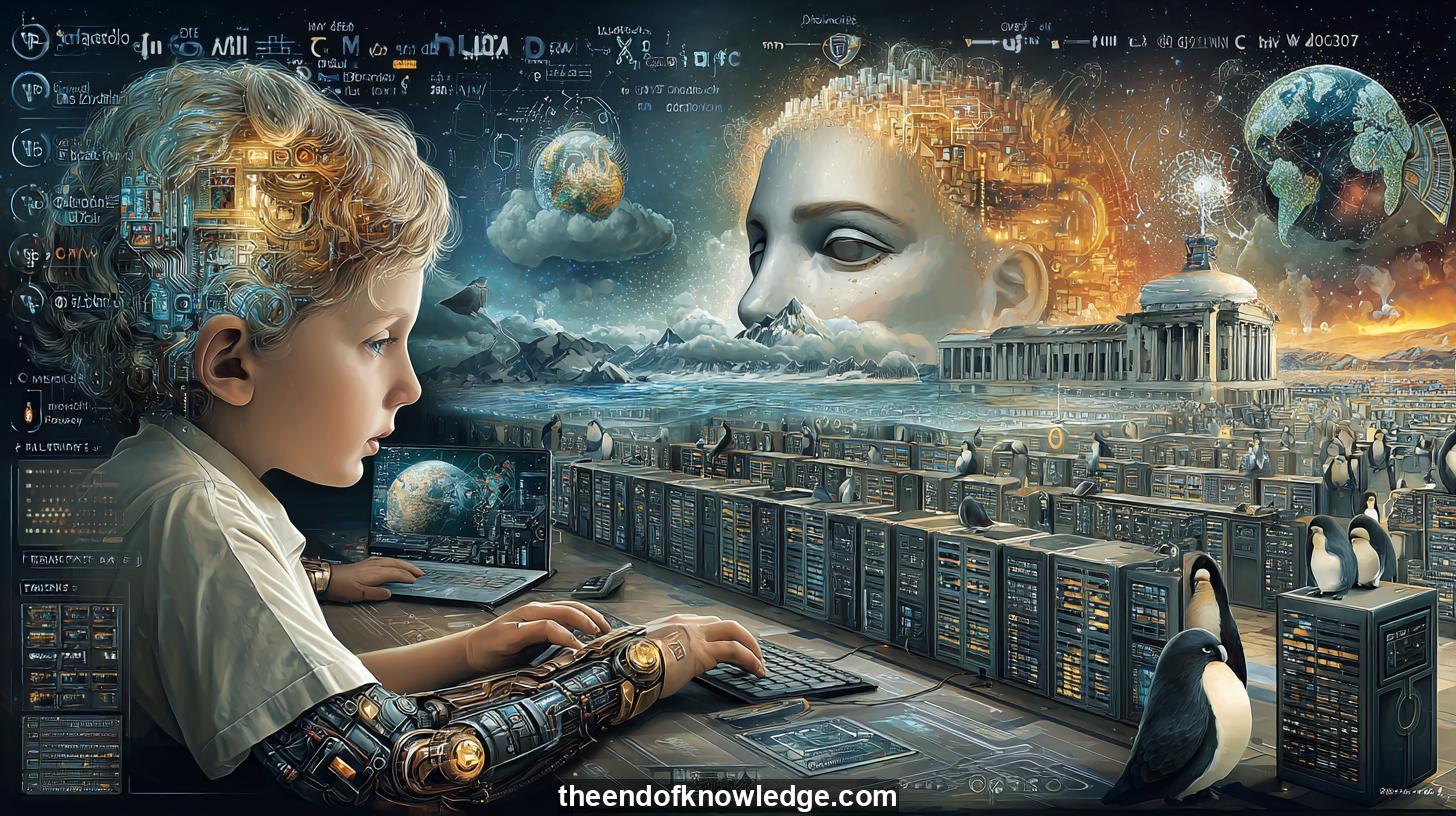graph LR
classDef main fill:#ffffff,stroke:#000
classDef era fill:#ffcccc
classDef infra fill:#ccffcc
classDef risk fill:#ffcccc
classDef prod fill:#ccffff
classDef tool fill:#ffffcc
classDef future fill:#f3e5f5
Main[Vault7-312] --> Era[Era Shift
1 6 30]
Main --> Infra[Infrastructure
2 3 11 29]
Main --> Risk[Risk & Memory
7 25 26]
Main --> Prod[Products & UX
4 8 9 10 13 21 22 24]
Main --> Tool[Tooling & DevEx
12 14 15 28]
Main --> Future[Future Visions
16 17 18 19 20 27 5]
Era --> S1[Explicit → Weights → Prompts
1]
Era --> S6[Legacy stacks shrink
6]
Era --> S30[Hybrid 1/2/3.0 stacks
30]
Infra --> S2[Hugging Face model hub
2]
Infra --> S3[LLMs as utilities
3]
Infra --> S11[Stripe & Vercel agent docs
11]
Infra --> S29[Kids vibe-code videos
29]
Risk --> S7[Spirits with super memory
7]
Risk --> S25[Prompt injection & leakage
25]
Risk --> S26[Context windows vs persistent memory
26]
Prod --> S4[ChatGPT billions before gov
4]
Prod --> S8[Partial autonomy with GUI
8]
Prod --> S9[Cursor dev-friendly interface
9]
Prod --> S10[Perplexity cites & sliders
10]
Prod --> S13[MenuGen hours vs week
12]
Prod --> S21[GUIs verify AI diffs
21]
Prod --> S22[Course generators & tutors
22]
Prod --> S24[Waymo still needs teleop
24]
Tool --> S12[Prompting first native language
5]
Tool --> S14[Docs to Markdown MCP
13]
Tool --> S15[DevOps flows agentizable
14]
Tool --> S28[Small diffs beat kilolines
28]
Future --> S16[Iron Man suit timeline
15]
Future --> S17[AI as electricity vs OS
16]
Future --> S18[LLM brownouts on API fail
17]
Future --> S19[LLaMA Linux vs giants
18]
Future --> S20[Mac mini personal LLMs
19]
Future --> S27[AGI after 2030
27]
class Main main
class Era,S1,S6,S30 era
class Infra,S2,S3,S11,S29 infra
class Risk,S7,S25,S26 risk
class Prod,S4,S8,S9,S10,S13,S21,S22,S24 prod
class Tool,S12,S14,S15,S28 tool
class Future,S16,S17,S18,S19,S20,S27 future
Resume:
Plácido Domènech’s livestream frames the session as the fifth season of XHUBAi, a Spanish-speaking AI community, celebrating nearly 400 podcast episodes. He greets viewers streaming across Twitch, TikTok, LinkedIn and others, invites Discord participation, and reminds them to like and subscribe. After a quick personal reflection he introduces breaking news: Meta reportedly bid almost one hundred million dollars annually for Ilya Sutskever’s startup, then pivoted to poaching CEO Daniel Gross, illustrating how Big Tech now pursues scarce talent with sports-level contracts.
The host then cues Andrej Karpathy’s YC talk on “Software in the Era of AI.” Karpathy argues that software has mutated three times in seventy years: Software 1.0 is hand-written code; 2.0 optimizes neural network weights with data; 3.0 treats English prompts as programs for large language models. He shows how Hugging Face has become GitHub for 2.0, while new tools like LoRA commits extend Flux image generators. Prompting, he says, is the first programming language native to human speech.
Next he reframes LLMs simultaneously as utilities like electricity, capital-intensive fabs, and 1960s-style operating systems. Centralized cloud timesharing mirrors mainframes, while thin clients like Mac minis hint at personal LLM computing. The diffusion curve is inverted: consumers adopted ChatGPT overnight, leaving governments and enterprises behind. Karpathy warns that these stochastic “people spirits” possess encyclopedic memory yet suffer hallucinations, jagged reasoning and amnesia between sessions; building reliable products means keeping them on a tight leash.
He advocates partial autonomy products such as Cursor and Perplexity that blend human verification with AI generation via GUIs, orchestrated calls and adjustable autonomy sliders. Vibe coding—iteratively prompting in natural language—lets non-programmers ship apps in hours, as he demonstrates with MenuGen, though DevOps drudgery remains. For agents to thrive, documentation must shift from click-based tutorials to LLM-friendly Markdown and MCP endpoints, echoing the early web’s transition to machine-readable formats.
Closing with the Iron Man metaphor, Karpathy predicts a decade-long slider from augmentation to agency, urges incremental deployment, and invites developers to rewrite the world’s software together.
30 Key Ideas:
1.- Software 0: explicit code, 2.0: neural weights, 3.0: English prompts program LLMs.
2.- Hugging Face mirrors GitHub for neural models, commits act like version control.
3.- LLMs behave as utilities, fabs and 1960s operating systems requiring timesharing.
4.- Consumer adoption inverted historic diffusion; ChatGPT reached billions before governments.
5.- Prompting is humanity’s first native programming language.
6.- Autopilot C++ shrank as neural nets grew; similar 3.0 will consume legacy stacks.
7.- Stochastic “people spirits” possess super memory yet hallucinate and forget context.
8.- Partial autonomy products blend human verification with AI generation via GUIs.
9.- Cursor orchestrates embeddings, chat, diff models behind developer-friendly interface.
10.- Perplexity cites sources and offers autonomy slider from quick answer to deep research.
11.- Vibe coding enables non-coders to build apps iteratively with natural language.
12.- MenuGen app built in hours via prompting, but deployment drudgery consumed a week.
13.- Documentation must switch from clicks to LLM-readable Markdown and MCP endpoints.
14.- DevOps complexity like Google Login flows should be agent-automatable.
15.- Iron Man suit metaphor: augmentation today, full agency over decades.
16.- Andrew Ng’s “AI is electricity” captures utility but ignores OS-like complexity.
17.- LLM brownouts occur when APIs fail, planet temporarily loses intelligence.
18.- Open-source LLaMA may evolve into Linux-like ecosystem against closed giants.
19.- Mac minis hint at personal LLM computing; cloud still dominates like 1960s mainframes.
20.- GUIs exploit human vision for fast verification of AI-generated diffs.
21.- Incremental small diffs beat thousand-line changes for human-supervised safety.
22.- Education apps split into auditable course generators and student-facing tutors.
23.- Tesla autopilot GUI visualized neural perception, foreshadowing LLM dashboards.
24.- Waymo demoed perfect self-drive in 2013 yet still needs teleoperation in 20
25.- Security risks: prompt injection, data leakage, adversarial gullibility.
26.- Context windows act like working memory; persistent memory remains unsolved.
27.- GPT-5 and AGI timelines stretch beyond 2030; agents need human oversight.
28.- Children vibe-coding videos foreshadow universal software literacy.
29.- Stripe and Vercel adopt LLM-first docs, pioneering agent-ready infrastructure.
30.- Future software stacks will hybridize 1.0, 2.0, 3.0 paradigms per task needs.
Interviews by Plácido Doménech Espí & Guests - Knowledge Vault built byDavid Vivancos 2025
 >
>